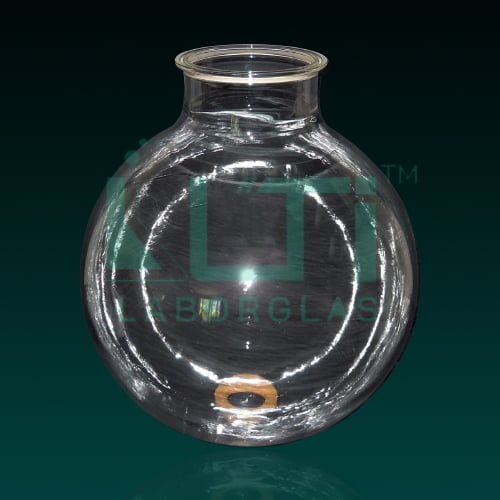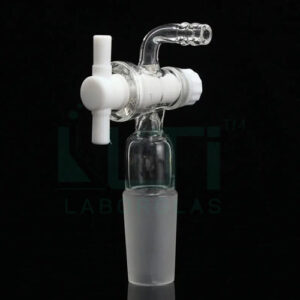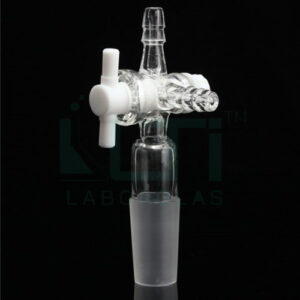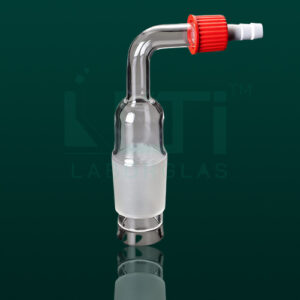- Wide Mouth
- With Flat Flange, 100 mm ID, 150 mm OD
- Made From Heat Resistant, Low Expansion 3.3 Borosilicate Glass
| PART No. | Capacity (ml) | Approx. Height (mm) | PACK Qty. |
| 5800-1000 | 1000 | 170 | 1 |
| 5800-2000 | 2000 | 205 | 1 |
| 5800-5000 | 5000 | 260 | 1 |
| 5800-10000 | 10000 | 335 | 1 |
| 5800-20000 | 20000 | 400 | 1 |
Here are some common uses of reaction vessels (flasks) in laboratory work:
- Mixing and Stirring Reactions: Flasks are often used for reactions that require thorough mixing and stirring. The shape of the flask, especially round or pear-shaped bottoms, allows for efficient stirring of reaction components.
- Heating and Boiling Reactions: Reaction vessels are designed to withstand heating, making them suitable for reactions that involve boiling, refluxing, or other processes requiring elevated temperatures.
- Solvent Evaporation: Flasks are commonly used in rotary evaporators for the evaporation of solvents. The round bottom shape facilitates the efficient removal of solvents under reduced pressure.
- Distillation: Reaction vessels, particularly those with round bottoms, may be used in distillation setups for the separation of components based on their boiling points.
- Refluxing: Reflux setups involve the condensation of vapors and their return to the reaction mixture. Flasks are often employed in reflux systems, allowing for prolonged and controlled heating of the reaction mixture.
- Synthesis of Organic Compounds: Reaction vessels are widely used in organic chemistry for the synthesis of various organic compounds. The flask shape and design allow for the addition of reagents, temperature control, and other manipulations during the synthesis process.
- Parallel Reactions: Multi-neck reaction vessels, such as those with two or three necks, are used for conducting multiple reactions simultaneously. This is particularly useful for high-throughput screening or optimization studies.
- Biological and Pharmaceutical Research: In biological and pharmaceutical laboratories, reaction vessels are employed for various processes, including cell culture, fermentation, and synthesis of pharmaceutical intermediates.
- Pressure Reactions: Some reaction vessels are designed to withstand high pressures, enabling researchers to carry out reactions under specific pressure conditions.
- Gas-Phase Reactions: Certain reaction vessels are equipped to handle gas-phase reactions, allowing the introduction and control of gaseous reactants.
- Catalyst Screening: Reaction vessels are used for catalyst screening studies, where different catalysts can be tested simultaneously.
- Scale-Up Experiments: Small-scale reactions in reaction vessels can serve as initial screening experiments before scaling up to larger quantities.





